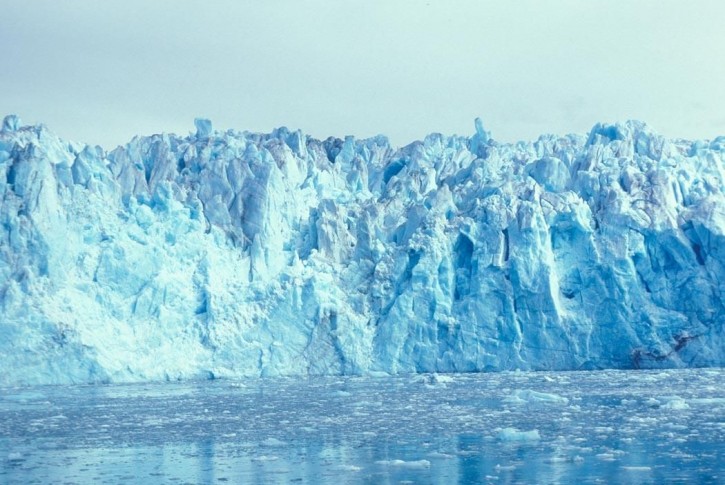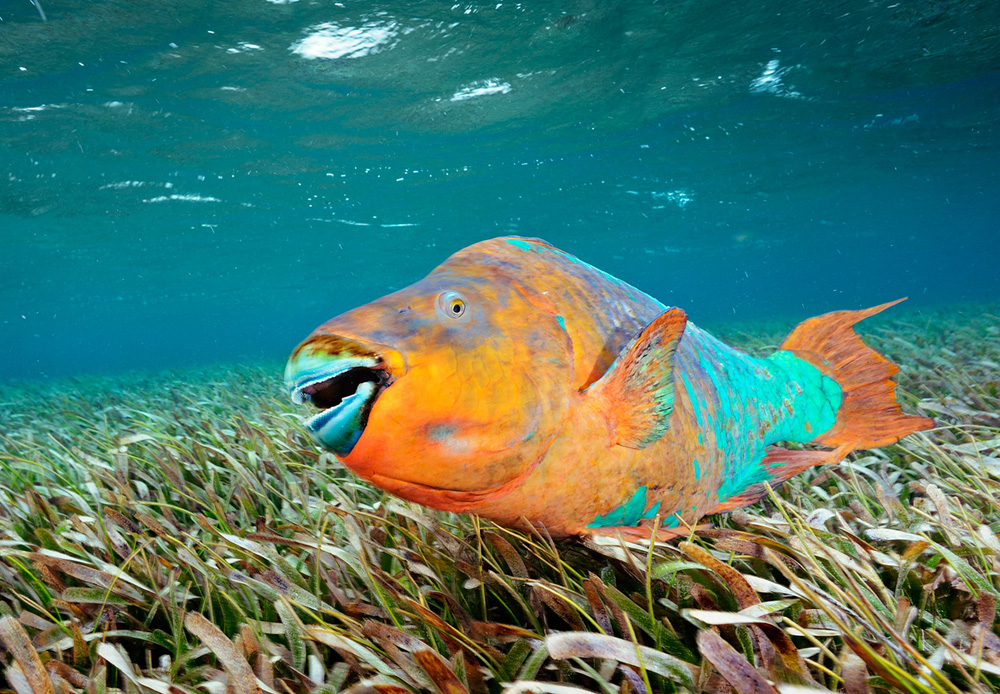It’s not a secret that humanity has been changing our planet since the dawn of times, but what we rarely think about is all those animal and plant species that have been around long before us changing and shaping the way our Earth looks today. And not only that! There are dozens of animals that still have impact on our planet, as well as those that have influenced the lives of humankind, like the cute cuddly dogs that used to be wolves back in the day. Just like that, dogs helped humans beat Neanderthals and become what we know today as modern people! Animals go to space, worms make agriculture possible, and don’t forget about mammoths changing the surface of our whole planet. Here are 10 bizarre ways animals have changed the world we live in.
The Great Oxygen Event
Also known as the Oxygen Catastrophe, this event took place around 2.5 billion years ago and become the first ever mass extinction on planet Earth. While most people believe oxygen is a good thing, too many of it can be harmful even for the organisms that require it to stay alive. There are also life-forms that should avoid oxygen at all costs – it’s like a toxin for them! When cyanobacteria arrived into oceans, it started producing free oxygen via photosynthesis, which, in the end, killed all bacterial life in those very oceans. Scientists believe that the oxygen then went on building up in the atmosphere removing methane and causing the temperature on Earth to drop drastically.

Dogs helped humans beat Neanderthals
Some 40,000 years ago both humans and Neanderthals roamed the Earth, but only one species remained in the end. How so? We have our dogs’ ancestors to thank for! Neanderthals weren’t so different from us – they had a brain of the same size, knew how to use tools, and were trying to survive just as much as anyone else. The only difference we had were dogs! It appears that ancient Mesolithic people used canines for reasons other than food – they actually lived and hunted together, which helped them get more food than anyone else. How did it happen? It turns out the dogs (well, wolves back than) came to us themselves! Domestication just happened by itself when ancient humans started building settlements along with piles of waste that attracted wolves. They came for the free buffet, and they stayed!

Beaches are made of Parrotfish poop
Have you ever wondered were all that amazingly white beach sand comes from? Well, it appears that most of it is fish poop! Meet parrotfish, the resident of tropical coral reefs and a mass-producer of pure white sand that we all love so much. This cute little fish has a beak with teeth which help munch through loads of coral, producing sand out of harder inorganic parts that don’t get digested. That’s why Hawaiians call Parrotfish ‘loose bowels’! One fish can produce up to 840 lb (380 kg) of sand per year. With millions of parrotfish munching on coral non-stop, white-sand resorts never go out of business!

Lice is responsible for humanity going fur-free
Back in the day it was pretty hard for humans to maintain any type of hygiene due to thick fur covering most of their bodies. Many creatures carry lice, each having their own species that like hanging out with them and them only, and that’s true for humans, too. We have not one, but two types of lice that like living on our bodies – head and pubic lice. While the first one is quite bearable and can be easily gotten rid of by improving the level of hygiene, pubic lice is more vicious and causes much more suffering. Imagine that back in the day pubic lice were less picky and liked to hang out all over the human body. So, humans shed most of their fur just to get rid of those nasty beings! Or at least prevent them from mixing with each other on the whole surface of the body causing unimaginable itching.

Cows trained us to drink milk
It appears that most of the world’s non-white population (around 100% of Native Americans and 95% of Asians) is lactose intolerant, but the rest of us humans are able to drink as much milk as we like. Why is that? Originally, people weren’t designed to drink milk past 5 years old – that’s the very age when our bodies stop producing the special enzyme (lactase) that helps digest milk the proper way. Yet we, Europeans, as well as Middle-Eastern cultures, domesticated cows around 8,000 years ago and started drinking milk more often that it was designed by nature. Those people who actually could tolerate it grew up stronger due to vitamin D and protein in the milk, passing the newly acquired lactose tolerance down to their kids.

Mammoth landscape design
Mammoths were huge creatures, so no wonder they had an equally huge impact on the environment. Researchers have traced mammoths droppings, locating their area of habitat and the way mammoths slowly declined in numbers (which, according to scientists, happened due to a fungus). It wasn’t a fast process, it took mammoths 1,000 years to disappear from the surface of the planet. As a result, mammoths were no longer there to knock over trees and trample the land, thus, Earth’s northern forests got a chance to grow as big as we see them today.

Wolves can change rivers
Wolves have been hunting in the Northern Hemisphere since the dawn of times. Then humans came and started hunting them down in order to save their kettle. The Yellowstone National Park hasn’t seen wolves for over 70 years, until they were put back there in 1995. Of course, everyone thought that the park’s ecosystem would change, but no one expected this to happen! It turns out that the park was practically infested with large elk that had no predator control their population. These elk dine on sapling trees, especially at the river banks, reducing the vegetation all over the park. So what happened when wolves came back? The large elk had to back down, especially from those parts of the park where they could be easily hunted – river valleys and gorges. Aspen, willows, and cottonwood started growing rapidly, rejuvenating the barren land. Then the birds came, and with them beavers that like to eat trees. Beavers, just like wolves, are ecosystem engineers and can alter the environment greatly. As a result of all this even rivers changed! The whole physical geography of the place changed due to wolves!

Tunnels created by sloths
We know plenty of giant animals roamed the Earth back in the day, but what we rarely hear about is how giant sloths made their way underground. In 1930s, archaeologists discovered weird smooth-looking tunnels in South America. They presumed ancient people created them, but there was no evidence to support that. The mystery remained unsolved untill 2017, when a few researchers discovered that these palaeoburrows were actually created by giant sloths that dug them using claws. Those tunnels could stretch for hundreds of feet and be up to two meters wide.

No worms, no agriculture
It appears Charles Darwin himself adored worms and found them the most fascinating species that helped our civilization thrive. Yes, these squirmy creatures are a power to be reckoned with! Ironically, it all comes down to worm’s poop – these creatures just go about their own business, eat stuff, poop some out, and as a result fertilize the ground wherever they go. And they’ve been doing this for millions of years! Worms actually turned the soil into something humans could work with. Without worms, early settlers in places like India, Mesopotamia, and Egypt, would have had to try and grow stuff on a barren land made of rock. So, thanks to worms we could actually build non-nomadic civilizations. Otherwise, we could still be hunting mammoths!

Salmon can change mountains
Salmon spawning is a pretty important deal when it comes to animals that feed on this fish. Yet scientists believe that this amount of fish moving up the rivers can also influence the surrounding landscape by literally ‘moving the mountains’. According to the paper with a slightly disturbing title ‘Sex that moves mountains: The influence of spawning fish on river profiles over geologic timescales’, salmon spawning can lower the land level up to 30%, as well as increase erosion in the area of spawning. Female salmon stir up the river’s sediment to lay eggs, allowing the current carry it away. The more salmon species come together for breeding, the more erosion they cause, changing the surrounding landscape for good.

